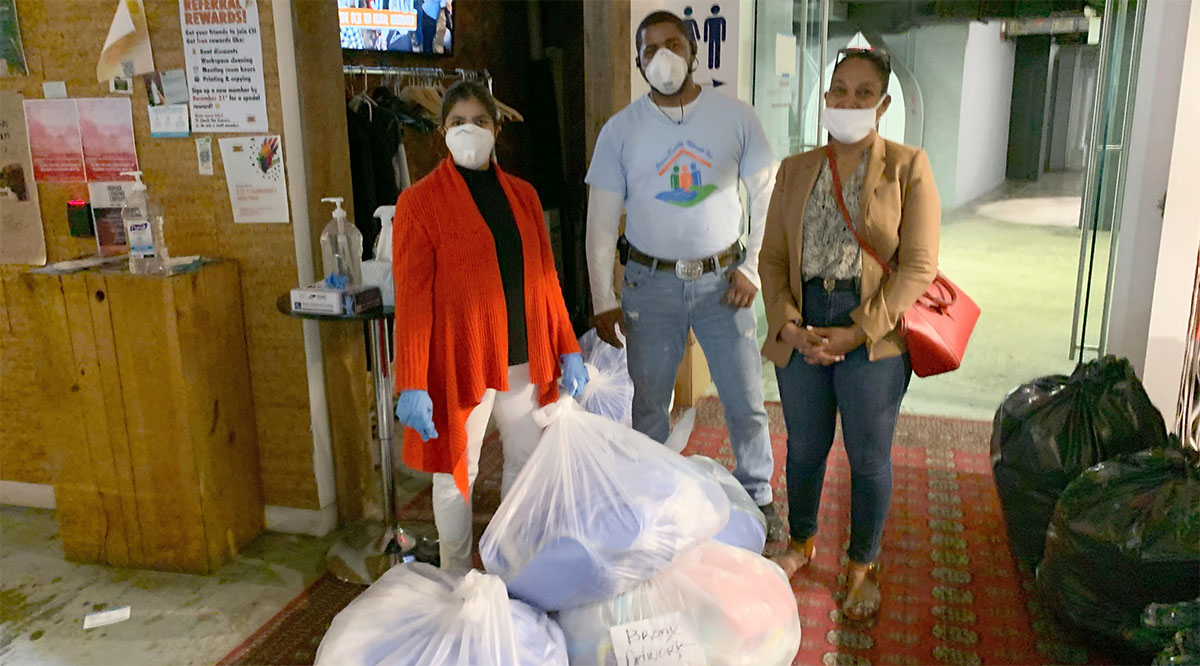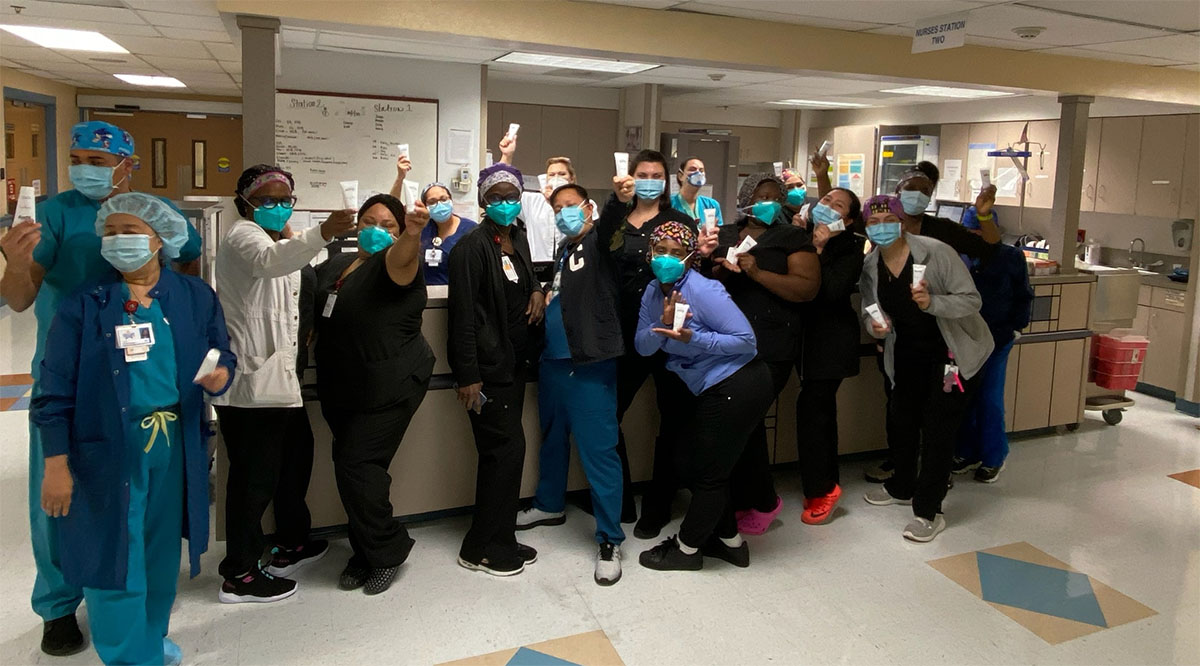
Editor's note: The opinions expressed by the authors do not necessarily reflect the opinions of the AAMC or its members.
The Tohono O’odham Nation stretches from the southern tip of Arizona along 62 miles of the state’s border and down into Mexico. These aboriginal lands once extended much farther, sweeping across the Sonoran Desert in the southwestern United States and part of northwestern Mexico — Tohono O’odham translates to “Desert People.” Today, the Tohono O’odham Nation has 34,000 tribal citizens, and they are doing everything they can to stave off COVID-19.
When the state of Arizona reopened businesses in the late spring of 2020, the Tohono O’odham continued to operate under a stay-at-home order and an enforced curfew. Tribal leaders handed out fliers emblazoned with their Nation’s seal encouraging the official policy of mask-wearing and distancing. Volunteers within the Nation visited the homes of elders with cloth masks in hand; yet, despite these efforts, the number of COVID-19 cases steadily climbed through this past summer and fall, with over 550 documented cases by mid-October 2020. Verlon Jose, governor of the Traditional O’odham Leaders, suspects that many more cases have gone unreported.
For the neighboring Navajo Nation, the situation is even worse. During the week of Dec. 14, 2020, alone, there were 20,095 new positive cases — a higher infection rate than any other state in the United States, including California.
The COVID-19 pandemic’s disproportionate effects on minority populations in the United States has unearthed a long-standing foundational crack in the American health care system. Across the country, the devastating effects of COVID-19 on medically underserved populations — including indigenous tribes and nations — is compounded by a lack of access, funding, and resources, including basic personal protective equipment (PPE).
Get Us PPE is a nonprofit founded by front-line physicians in March 2020 to provide PPE free of charge to the people who need it most. It has the largest nongovernmental database of PPE needs in the country, built from front-line facilities registering requests for PPE on the Get Us PPE website — providing unique visibility into the ongoing PPE shortage crisis. When PPE shortages began to surface in March, they most immediately affected health care workers in acute care hospitals across the country. Since then, large hospital systems have — for the most part — been able to access and purchase the PPE needed to protect their staff, but many small facilities and under-resourced communities have been experiencing worsening shortages month after month without respite.
Although public and media attention have shifted away from the PPE shortage, the crisis continues. Requests for PPE rose by 260% between November and December 2020, with over 99% of requests coming from nonhospital facilities such as clinics, shelters, prisons, schools, long-term care centers, and nursing homes. Since March 2020, Get Us PPE has received over 20,000 requests for PPE, and this number represents just a fraction of the full scope of PPE needs nationally.
Medically underserved communities — including indigenous tribes and nations like the Tohono O’odham and Navajo Nations — are often the most COVID-vulnerable and the least likely to have access to PPE. These two Nations are made more susceptible to the effects of COVID-19 by, among other factors, the prevalence of multigenerational homes, some without running water, and a lack of essential public services. Throughout the pandemic, health care workers in many indigenous nations have been in desperate need of almost every type of PPE, including masks, gowns, and gloves.
In May, Verlon Jose told us, “They’re telling us we’re not going to get our shipment of supply for a month, two months. Everything is backed up across the country.” Today, nearly a year into the pandemic, their shortages remain severe, with PPE prices continuing to soar and global supply chain issues making basic equipment almost impossible to obtain for small facilities and underfunded communities.

Get Us PPE has helped deliver hundreds of thousands of pieces of donated PPE to indigenous communities, but PPE demand continues to far outstrip supply. Nationwide, Get Us PPE has delivered over 6.8 million items to front-line facilities and COVID-vulnerable groups, but, despite the herculean efforts of more than 150 volunteers working around the clock, the national demand for PPE is so high that only about 15% of requests in Get Us PPE’s database have been filled. In order to help deliver the limited supply of PPE to the people who need it most, a group of volunteer researchers and engineers, in consultation with health equity experts, developed an equitable distribution algorithm to guide Get Us PPE’s allocation of equipment to facilities most in need.
Get Us PPE’s Fair Distribution Algorithm is designed to optimize both logistical efficiency and health equity in delivering PPE. It is the first algorithm to use artificial intelligence matching technology, like Uber’s rider/driver matching software, in the context of scarce resource distribution during a large-scale crisis. This represents a major step forward in emergency logistics management and resource allocation.
The Fair Distribution Algorithm helps systematize the allocation and delivery of scarce resources to populations disproportionately impacted by crises. When determining where a PPE donation should go, the algorithm incorporates both logistical factors, such as distance between the PPE source and the recipient, and health equity factors, such as acceptance of Medicaid; population demographics; local health care system capacity; and other epidemiological, social, and health factors.
The algorithm optimizes for the most efficient donor-recipient match, but it includes health equity as a critical component of efficiency: Facilities with higher needs according to health equity metrics “move geographically closer” to the location of the donated PPE in the eyes of the algorithm. The algorithm is then more likely to rank these under-resourced facilities as the highest priority recipients. In the past, equity and efficiency have often been seen as competing priorities, especially during times of crisis or disaster. Here, they are one and the same as, in reality, equity must be valued as an essential component of any efficient solution whose goal is to get resources to people in need.
Get Us PPE’s Fair Distribution Algorithm has applications far beyond the COVID-19 pandemic. This flexible, dynamic technology can serve as the basis for a new generation of equitable resource allocation systems. It can be customized for use in future crises, pandemics, and natural disasters, and it can be used to distribute resources like vaccines, food, water, or other essential goods. It brings us one step closer to a more equitable world.
Meanwhile, there is much more work to be done to get PPE to people in need as vaccines slowly roll out across the country and uncertainties remain about asymptomatic transmission and the impact of new viral strains. Last month, over 60% of facilities that reported their PPE needs to Get Us PPE were completely out of at least one type of PPE.
Jose told us, "[The Tohono O’odham] are always left out there to sink or swim. We’ve been swimming. We’ve been here 500 years and we’ll be here another 500 years. We’ll survive one way or another.” But communities like Jose’s should not be fighting for their fundamental survival. They should have the lifesaving supplies they need that can serve as a barrier between them and the virus.
To donate to Get Us PPE, visit www.getusppe.org/donate. To request PPE, visit www.getusppe.org/request. To volunteer with Get Us PPE, go to www.getusppe.org/volunteer.


